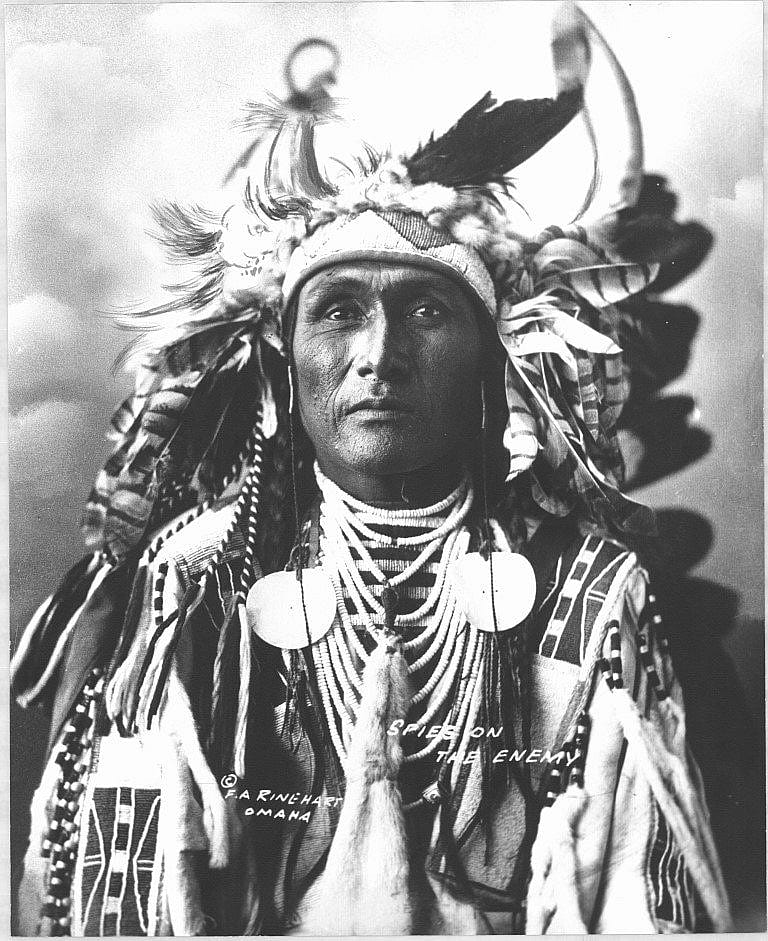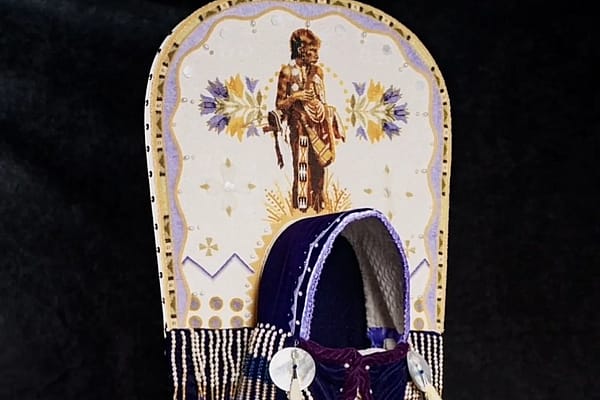
Hidden Treasures of Internships
As an intern in the McCracken Research Library, I have been able to delve through the hidden and unprocessed photographic collections in the vaults and bring them into the light for the world to see. There are so many collections and documents that have been waiting for interns, like me, to work with them.
Recently, I have finished processing the Frank A. Rinehart Indian Photographs collection. Rinehart was a commercial photographer in Omaha, Nebraska. This collection consists about 150 Native American portraits, 35 original and 115 reproduction. Photographs in this collection cover images from when F.A. Rinehart was commissioned to photograph the 1898 Indian Congress during the Trans-Mississippi International Exposition held in Omaha, and then other Native American portraits from multiple tribes in 1899 and 1900.

Many may ask, why does the library have the collections it has and why are they so great? Good questions. Rinehart’s photographs are significant because he was one of the first photographers of his time to portray Native Americans in a positive and stunning spotlight. Rinehart and similar artists, like Edward S. Curtis, photographed Native American leaders, individuals, and groups, in full regalia, dance outfits, and clothing of everyday life, to illustrate their culture and dignity.
It’s only one of the many hidden treasures found in the McCracken. I am now beginning to work on the MS 438 Forrest Fenn Indian Photographs collection, which consists of 2,401 photographs of mostly southwest Native American tribes and missions, that range from the late 1800s to early 1900s, donated by Forrest Fenn. There is no possible way of completing this process before I finish my internship, but I would like to get as far as I can.

Processing these photographic collections is important because we not only deliver them digitally, but we allow them to be viewed and used by researchers and public all over the country and world. I have described, scanned, and uploaded each photograph to a database from which it can be uploaded to the Center’s website.

Internships are a significant part of education in every field because it allows us to take what we have learned in the classroom and apply it to the real world, but it also teaches and shows so much more that they’ll never learn in a classroom. I can definitely attest to this with my internship. I am beginning my senior year as a history major at Brigham Young University-Idaho and am a born-and-raised southeast Idahoan. Luckily, Wyoming is not a big culture shock to me!
My focus is in American West history, which is why the Center of the West is a great place to do my internship and get a feel for a museum setting. This archiving internship has been especially enjoyable as I get to focus on Native American and western photographs.
I brought my knowledge of history that I’ve learned in classrooms, but I have since learned programs, databases, and all sorts of Native American items that I would never have dreamed of learning in a classroom as an undergrad. So if you’re thinking of an internship in the west, I would recommend coming here for a great overall experience.
Written By
Hannah Eckhardt
Hannah Eckhardt is from Blackfoot, Idaho, and is the photographic objects archival intern in the McCracken Research Library this summer. She is beginning her senior year studying history at Brigham Young University-Idaho and is expected to graduate in July 2016.












